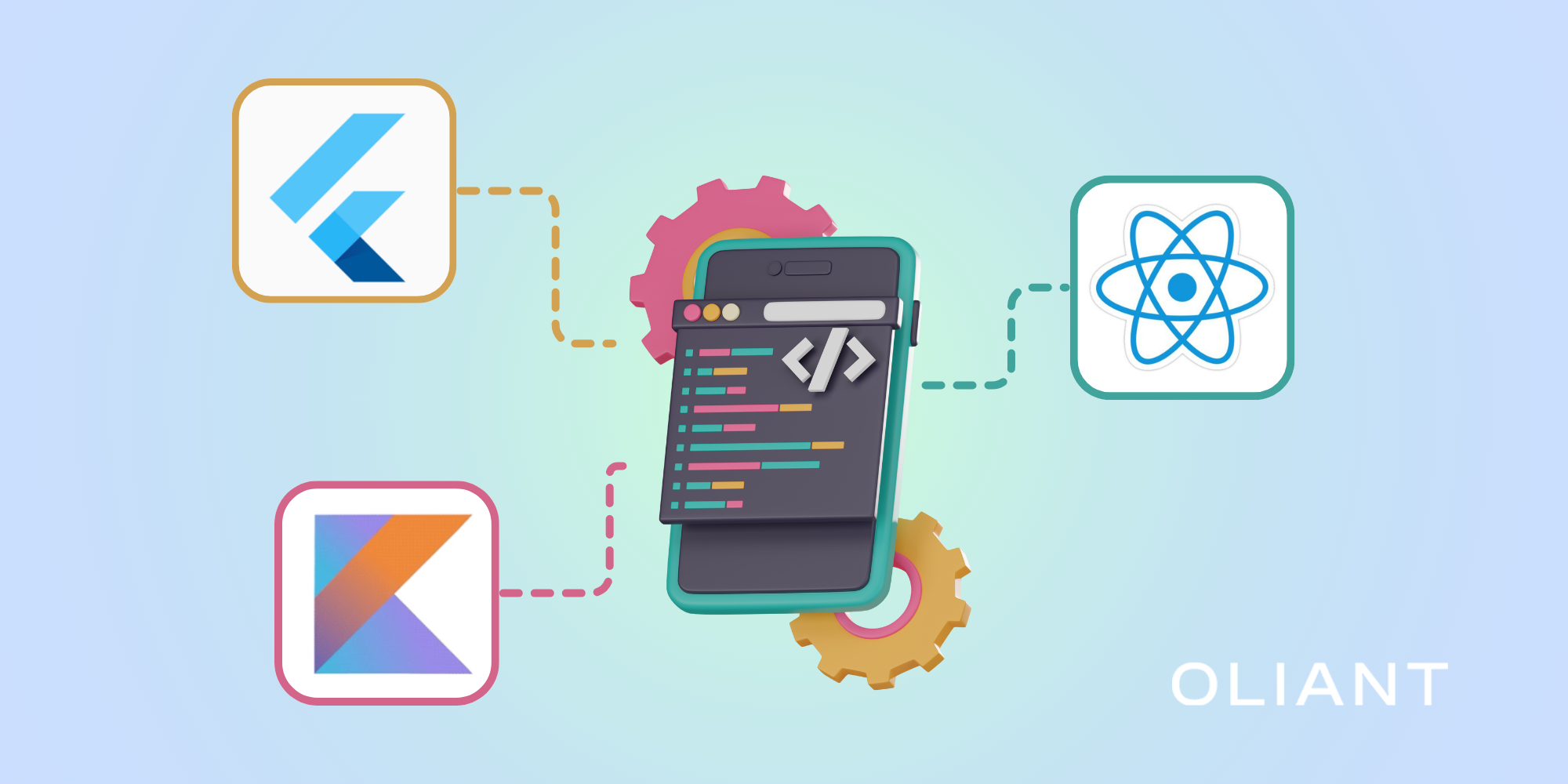When you’re thinking about building a mobile app in 2025, it’s easy to feel overwhelmed. Should you go all-in on native development for maximum performance, or take advantage of cross-platform mobile development tools to reach iOS and Android users with one codebase?
At Oliant, aside from keeping in mind the best tools for web development, we also have to stay at the forefront of mobile apps. Popular programming languages are commonly used in various situations, but the secret to a successful and reliable solution lies in a well-engineered combination of the right tech.
Let’s walk through today’s most effective approaches to mobile app development, exploring not just the programming languages behind them but also the software tools that make them practical for everyday developers. We’ll also discuss the pros and cons of both native and cross-platform mobile development. Let’s get started!
Why 2025 Is the Best Year for App Development
Mobile is still a massive frontier. In 2024 alone, people around the world downloaded about 137.8 billion apps and games. And as smartphones continue to take over our daily and work lives, it's clear the market won't be slowing down, and the competition for user attention remains fierce.
At the same time, the tools have matured. According to Stack Overflow’s 2024 survey, both Flutter and React Native, the two giants of cross-platform mobile development, were used by nearly 1 in 10 professional developers each.
But native development is far from dead. Swift and Kotlin are still the lifeblood of iOS and Android apps that need cutting-edge performance. And then there are hybrid options, like Kotlin Multiplatform, which let you share logic while keeping native UIs.
Cross-Platform vs. Native App Development
The fist question you need to ask yourself when getting into mobile app development is, should you go for native or cross platform? Or maybe what you need is a hybrid model. They all have their pros and cons, so it’s important to consider what your goals ultimately are and how you’re looking to manage your development process. Let’s take a look.
Cross-Platform App Development
The stars of the cross-platform mobile development universe are Flutter and React Native. Each offers one codebase for two platforms, as well as faster development cycles. But their strengths differ.
Flutter (Dart)
Flutter is often praised for its consistency; its applications are built in Dart, a language that will look familiar to anyone who's written Java, Javascript, or any other C-like language.
Instead of relying on platform components, it draws its own widgets, which means your app looks and behaves the same whether it’s on iOS or Android. That’s a big deal if your design requires pixel-perfect animations or if you want to avoid bugs caused by mismatched native components.
Devs also love its hot reload feature, which speeds up iteration, and the fact that it compiles directly to native ARM code, delivering excellent performance. Flutter is especially appealing for startups and creative projects where design and motion are central to the experience.
React Native (TypeScript/JavaScript)
React Native, on the other hand, leans on familiarity. If you already use React on the web, the transition will be very smooth.
TypeScript support adds type safety, and libraries like Expo make building and deploying apps much less painful. Its reliance on actual native components means apps often feel “at home” on each platform, which is crucial for user experience. For companies with a web-first mindset, React Native lowers the barrier to entry and speeds up development.
Native Development
Sometimes, however, cross-platform development might not be what’s right for your product. If you want to tap into the latest iOS features or take full advantage of Android’s evolving ecosystem, native development is for you.
Swift + SwiftUI (iOS)
Swift paired with SwiftUI has become the gold standard for Apple development. Apple’s frameworks are always first accessible through Swift, and building with SwiftUI feels more modern and streamlined compared to older UIKit approaches.
For apps focused on the Apple ecosystem (iOS-first startups, iPad productivity tools, or visionOS projects), going fully native ensures your app looks great and performs flawlessly.
Kotlin + Jetpack Compose (Android)
On the Android side, Kotlin has solidified its place as the official language, and Jetpack Compose provides a declarative UI framework similar to SwiftUI. Together, they enable faster development and cleaner code compared to legacy XML-based layouts.
If your project is Android-first or depends heavily on Google services, Kotlin and Compose are the most future-proof way forward.
.png)
The Hybrid Model: Kotlin Multiplatform
Some teams want the best of both worlds: shared logic without giving up native design. In that case you might want to look into Kotlin Multiplatform (KMP).
With KMP, you can write core logic once—things like networking, data models, and business rules—while still building native UIs using SwiftUI on iOS and Jetpack Compose on Android. This hybrid approach reduces code duplication while still allowing platform-specific UI work.
In fact, JetBrains has a strong roadmap for 2025 that includes stabilizing Kotlin Multiplatform for iOS and improving tooling across the board. This makes it a smart choice for teams who don’t want to commit fully to cross-platform mobile development but still need efficiency at scale.
Alternative Programming Languages for Mobile App Development
If you want to go another route, whether it’s because you're more familiar with some other language or because you’re looking for other features, here are some of the most popular alternatives available.
- JavaScript: A great option for both web and mobile apps, often used for hybrid apps. JavaScript continues to dominate, especially for large-scale fintech and e-commerce apps, combining speed and security.
- Java: This is the dominant language for Android apps, known mainly for it’s stability and performance.
- Python: Known for its versatility and ease of use. Python is increasingly favored for AI and machine learning integration within apps, thanks to its vast libraries and ease of use.
- PHP: Another great alternative, PHP is renowned for web application development and server-side scripting.
- Ruby. Esteemed for its elegant syntax and web application development. Ruby maintains strongholds in web apps but plays smaller roles in mobile development compared to newer languages.
Best Programming Languages for Game Developers
Mobile game development is a world of its own, often living outside the typical cross-platform mobile development conversation.
Unity, powered by C#, is still the go-to engine for 2D and 3D games, while Unreal Engine dominates at the high end with cinematic 3D powered by C++. Both engines export to iOS and Android, and both maintain massive ecosystems of assets and plugins. For game-focused projects, these engines remain unmatched.
Making the Right Choice
So, how do you decide what’s best for your mobile app project in 2025? Start with a few key questions. What’s your team good at today? Are you aiming for an MVP or a long-term, feature-rich platform? How important is performance, or the “feel” of the UI, to your users?
The future of mobile development isn’t about one winner. It’s about fit. No matter which stack you choose, one principle still holds true: the faster you can build, test, and iterate, the more likely you are to succeed. That's why it’s so critical to make the right choice from the beginning. And if you’re looking for where to start, a professional partner is something that can go a long way to help. So, don't delay your projects; find the right software and start building your dream mobile app today!




















.png)





.png)



.png)










.avif)










.avif)
